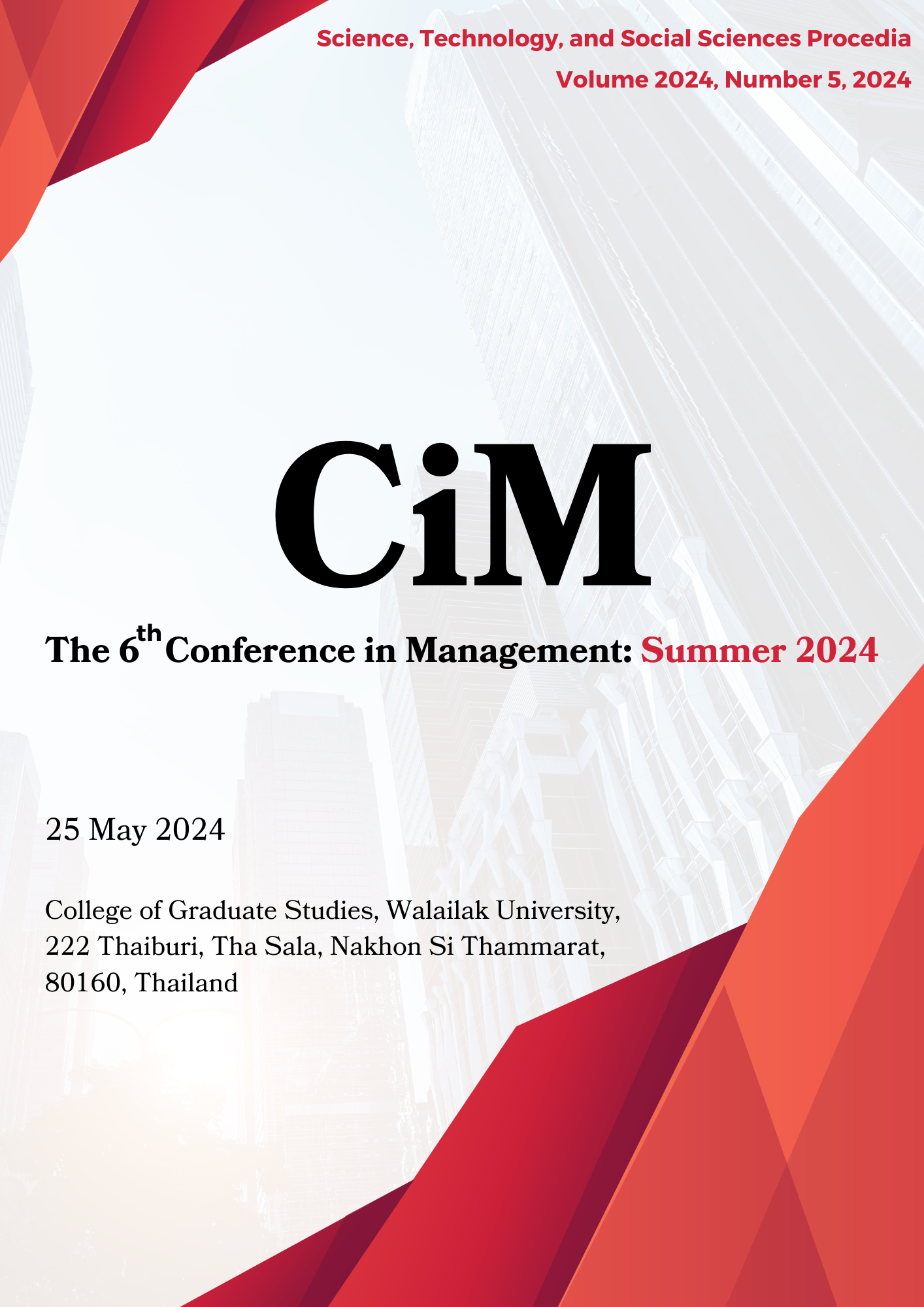Human Resource Management Practices in Small and Medium-Sized Enterprises in Jining City
Keywords:
Human resource management, Small and medium-sized enterprises, Employee engagementAbstract
The research objectives were as follows: 1) to examine the current human resources management practices in small and medium-sized enterprises in Jining City; 2) to study the problems of human resources management practices in small and medium-sized enterprises in Jining City; and 3) to propose guidelines for effective human resources management practices in small and medium-sized enterprises in Jining City. Quantitative research and document study were used, focusing on HRM practices in SMEs in Jining City. A questionnaire survey was conducted to collect data from 81 SMEs, targeting owners based on specific criteria, selecting SMEs based on scale, industry, geographical distribution, legality, and willingness to participate. Respondents were SME owners chosen for their work experience, education, company size, and industry background. Data analysis included questionnaire data analysis using frequency, percentage, mean, standard deviation, correlations analysis, and multiple regression, and document analysis by content analysis. The research findings revealed that: 1) the current human resource management practices in SMEs in Jining City faced several challenges. These included dissatisfaction with communication during recruitment, lack of transparency in selection criteria, mixed perceptions on training programs and performance evaluation processes, issues in compensation management, and discord regarding the HR department's strategic role; 2) problems in HRM practices in SMEs in Jining City included low employee satisfaction, engagement, inadequate skill development, and communication gaps. Employees felt undervalued, leading to disengagement, while ineffective communication exacerbated these issues. Skill development efforts were perceived as lacking, and there was a notable communication gap. Addressing these challenges required prioritizing employee well-being, engagement, skill development, and transparent communication; 3) guidelines for effective human resource management practices included enhancing the work environment, recognition for contributions, and management style. Fostering effective communication, recognition, and reward mechanisms. Investing in comprehensive training programs. Ensuring clear communication channels and cross-departmental collaboration. Prioritizing employee well-being and compliance with legal requirements. Promoting diversity and inclusion. Embracing continuous improvement by soliciting feedback and making necessary adjustments.

